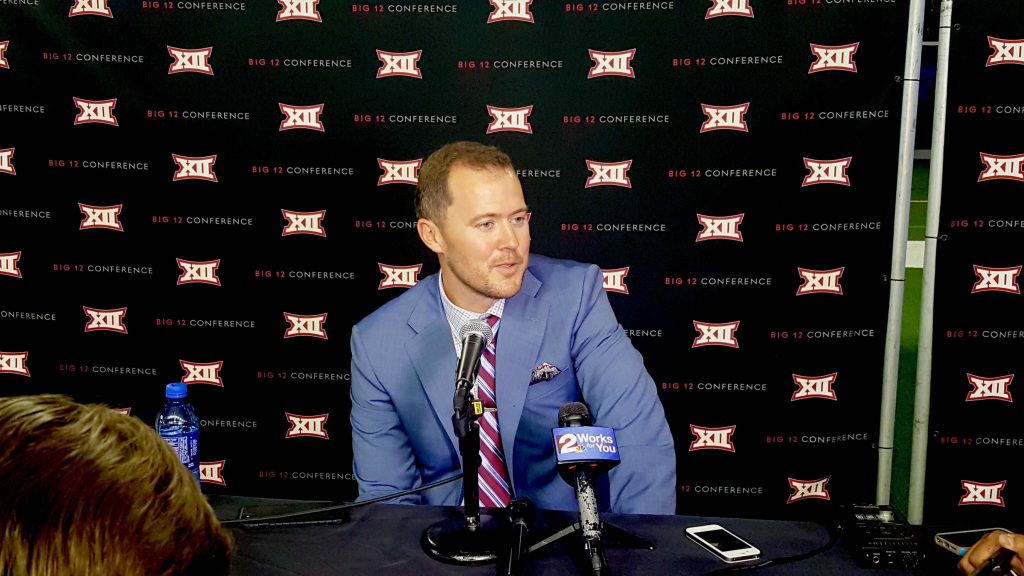
FRISCO, Texas – Lincoln Riley is entering his second season as the head coach at Oklahoma. With a Big 12 title and a trip to the College Football playoffs under his belt, there wouldn’t seem to be much need of a learning curve.
However, when Riley spoke Monday at the annual Big 12 Media Days at the Star, he pointed out that he is still trying to figure things out.
“I learned a lot. A lot of things that we did well, a lot of things that we have to do better. It’s been a lot different this year,” Riley said. “The fact that you’ve got all the time to really help prepare, to really take a step back and look at all aspects of the program and find ways that we have to get better. I got to be better in a lot of areas. Managing the team. Do a better job for our players, our coaches. Each year, you’re learning your team. I’m trying to figure out, what does this team need? Because what we needed last year, and what we’re gonna need this year, are two completely different things.”
One of the aspects of the game Riley is going to have to master this season is the new NCAA rule when it comes to redshirting players. It now states that any player can play up to four games in a season and still be able to retain his redshirt season.
For Riley, this prospect brought an almost diabolical smile to his face when he talked about it.
“It completely changes it. I don’t know if people on the outside or even maybe us on the inside understand how different that rule is,” Riley said. “How much the game is going to be different, the strategy behind it. I think it’s going to be fun. I think it’s a good rule.”
The NCAA used to define academic redshirts as “student-athletes that may practice in the initial term and receive athletics aid during the initial year of full-time collegiate enrollment but may not compete in their first year of full-time collegiate enrollment.” So, a student-athlete was given five years to complete four years of eligibility.
In the past, if a player entered one game that, their red-shirt season was in danger of being taken away. This was a danger zone for coaches when injuries to key players arose.
“We got into some dicey situations last year in the playoff where an injury here or there we would have had to pull a redshirt on a guy,” Riley said. “So, it takes that out of the equation, which is good. That’s the right thing for the players and it does give you a chance to use those games in the way you best see fit. I think each group will have their own strategy for it and I think it will be interesting to see and I think it will be something we learn from year-to-year and I think it was a good, positive step for college football.”
An incoming freshman can play four games and still have four more years of eligibility.
The rule is also great for programs like Oklahoma, Alabama, Florida State and Georgia, that normally have deep recruiting classes. This allows teams to let players see action periodically during the season, keep the player involved in the team and still know they will have them for four more seasons.
Riley, who is starting to earn a reputation as an offensive wizard, the different options this gives him makes him giddy.
“You got a large chunk of players that are now available for close to a third of your season. And don’t have to burn a year to do it,” Riley said. “Whether you use it to try guys out, whether you use it in big games where you want to get your depth better, whether you use it at the end of the season if a guy gets hurt so you don’t have to burn a redshirt on guys. There’s going be so much strategy behind it. And I think it’s really just going change the overall impact or maybe mindset of, “Do we redshirt this guy or not?” Where maybe in the past, yeah, let’s just go ahead and play him and maybe play him on a couple special teams, this or that. Well, if you can get four full games out of a guy and still save the year, I don’t know. It’s interesting. It’s a huge change. It’s going really have a huge impact.”

